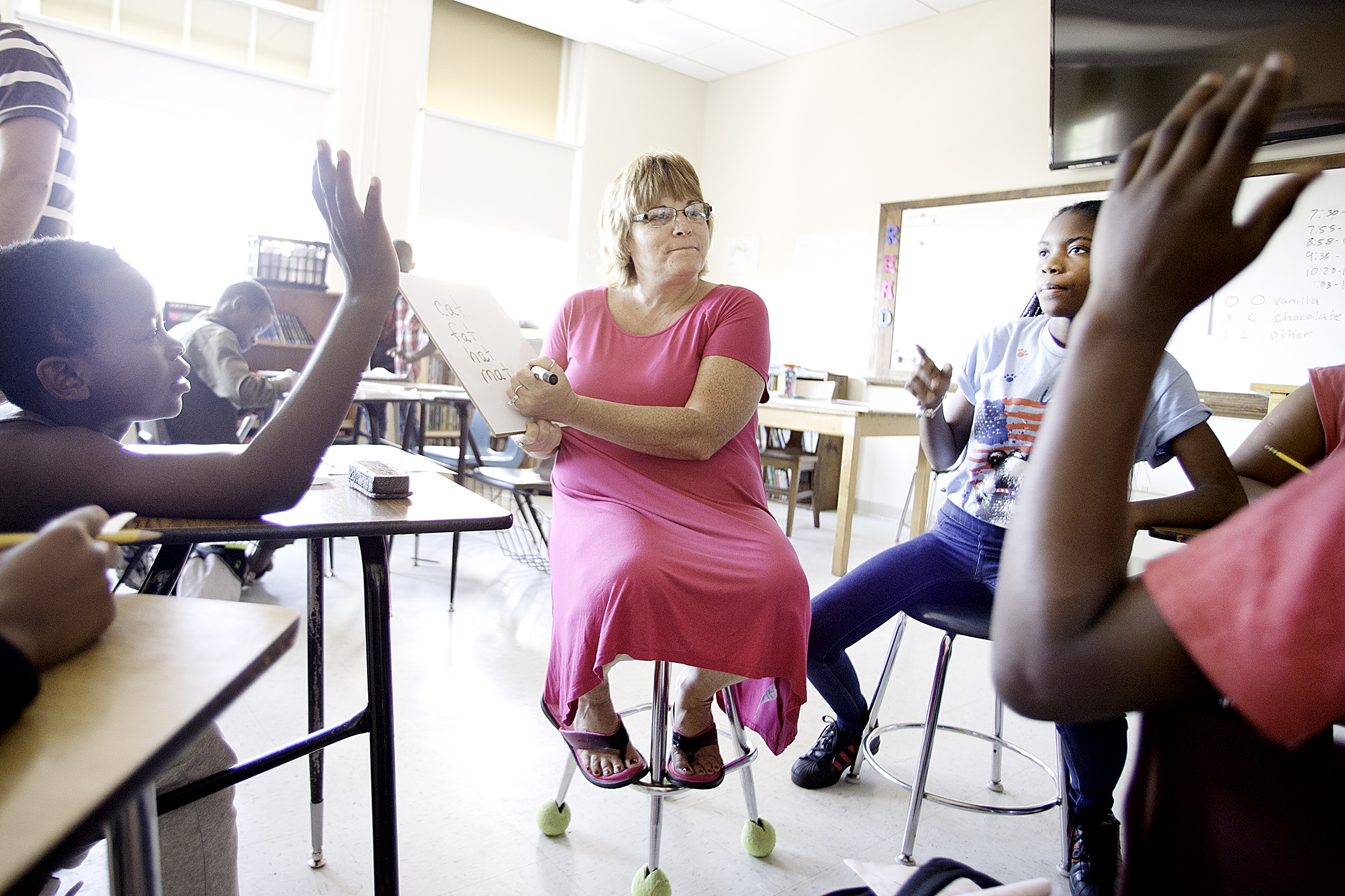LEWISTON — Less than two weeks after school let out for the summer, Damien Gould, Hamda Mohsin and hundreds of other Lewiston students were back in class Wednesday for Lewiston School Department’s summer programs.
More than 1,100 students – nearly 20 percent of the district’s enrollment – are enrolled in programs that have one of three goals: enrichment, making up work, and preventing the loss of student learning over the long summer.
In Auburn, about 15 percent of the district’s students are enrolled in a summer program, Superintendent Katy Grondin said.
“I wish we could do more,” Grondin said. Test data shows where students are in the spring and fall, and indicates that students fall behind after the long summer.
Summer programs are different from traditional summer school in that students often aren’t there just to make up work. The classes are more creative and laid back, are half-days, and the programs run for four or five weeks.
Because of budget constraints, space is limited.
At Lewiston Middle School, there was a waiting list of about 20 students who didn’t get in.
On Wednesday, the 189 students who did get in worked on reading, writing and math skills or took enrichment classes such as cooking or dancing. English Language Learner students worked to improve their English.
In his crime scene investigation class, Damien Gould, 11, wrote a report cataloging details about a slinky.
Seated behind him, Hamda Mohsin, 12, examined a bubble wand and wrote a detailed description.
CSI students were describing everyday items “because that’s what is at crime scenes,” teacher Sarah Cowles said. The exercise was the beginning point of students learning to pay attention to details and think like scientists and crime scene investigators.
“That way, they’ll be ready to make observations when we’re ready to solve our crimes” in future classes, Cowles said.
Gould described the slinky as “small, metal and black,” he said. The toy could be at a crime scene if somebody “sharpened the end and used it as a weapon.”
The seventh-grader enrolled in the summer program because of the CSI class, he said. “I want to go into the military or CSI when I grow up,” he said.
Mohsin, who went to Longley Elementary School, enrolled “because I want to learn about the school, so next year I don’t get lost,” she said. The middle school “is really big.”
National research indicates a typical student can lose a month’s worth of learning from the long summer, but the loss worsens for children who aren’t read to, aren’t encouraged to read or are not exposed to activities using reading and math.
“So many of our students don’t have summer learning experiences,” Lewiston Superintendent Bill Webster said. He’s talking about families who can’t afford trips to outdoor nature parks, or to cities like Boston, or have limited means for having plenty of books to read.
“Reading is critical to maintaining one’s educational level,” Webster said. “National research shows students who don’t get that exposure in the summer, who aren’t reading, lose two to three months of instruction. For them, every day they’re not in school they’re losing a day of learning.”
That means those students don’t catch up to where they were in June until October or November, Webster said.
Auburn’s Grondin agreed, but said even if her district had more programs, attendance is a problem.
“In the summer families have vacation plans. Those who are able to commit, it’s wonderful.”
She hopes Auburn schools “will keep looking at creative ways to support families in helping their students,” such as showing families how to keep their students engaged in math and reading.
Webster said the program costs between $500 to $1,000 a student and are covered by grants and the budget.
“It is a cost,”he said. “At the same time it’s an inexpensive investment for helping students become more successful and remain in school.”
Lewiston’s graduation rate has been about 70 percent, Webster said. “One of the keys to increasing that is having more programs such as this.”

Pull quote:
“National research shows students who don’t get that exposure in the summer, who aren’t reading, lose two to three months of instruction. For them, every day they’re not in school they’re losing a day of learning.” — Lewiston Schools Superintendent Bill Webster


